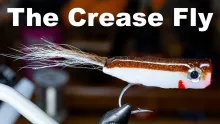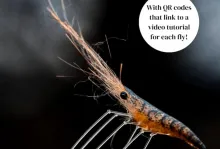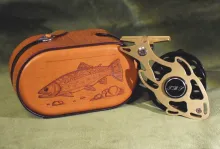The second part on keeping your fly fishing gear in the best possible condition. This time about reels: how to clean them, how to store them. By fishing guide Roland Henrion, whose expertise results in good and sound advice.
In the first part, we learned how to take care of our precious rods. Now I will explain how to look after our reels. For trout fishing, a reel plays a lesser part than the rod. It is merely a fly line holder, but this doesn't mean it is cheap and not worth maintaining. In saltwater fly fishing though, the reel plays an essential part in the fight against fast and powerful adversaries. We should always be able to rely on our fly reel and to do so, we have to keep it in perfect condition. It's not as hard as you might think...
Reel care
Reel manufacturers have a difficult task: we want our fly reels to be light, yet very strong and rigid. They have to look good and be saltwater resistant. The drag must be ultra smooth and yet have train-stopping power. Oh! and please, can you make them affordable as well?
Reel design is all about making compromises between what is needed and what can be done... within a reasonable price: aviation grade aluminium is lightweight and fairly strong, yet corrodes very easily. Titanium would be much better, but it's also highly unaffordable. So let's stick to aluminium and in order to protect it from the elements, we can paint it (no good for saltwater use) powdercoat it (better) or anodize it. Still, many parts like screws, nuts, washers, springs etc... have to be made from other materials like stainless steel, titanium, brass, bronze or even tempered steel. The combination of different metals may also cause corrosion problems due to what is known as electrolysis. Right. So our reels are not 100% corrosion proof and what can we do about it?
Just follow these simple tips:
- Avoid dipping your reel in water as much as possible and certainly in saltwater.
- Don't knock the reel against rocks, boat decks, hard floors etc. Small scratches and dents expose bare metal which will corrode.
- On a boat always place the rod butt (and reel) on a damp cloth, so it will not slide and scratch.
- Never drop the reel in sand! Sand grains are very hard and can scratch the inner housing, damage drag disks and even ball bearings.
- On a moving boat, make sure the reel is not exposed to spray. The power of the spray can force sea-water deep into the reel where it will attack the ball bearings.
NOTE: even though a ball bearing housing is made from stainless steel, the balls themselves are not. A corroded ball bearing will heat up and seize - in the middle of the fight with your fish of a life time. I have seen it frequently. - Immediately after fishing, rinse the reel under a LOW pressure tap. Remove the spool, shake off excess water and leave it to dry before reassembling.
- Back home after a saltwater fishing trip, and before putting the reel away for a long period, give it an in-depth cleaning: remove fly line and backing, scrub carefully with hot soapy water to remove salt crystals, rinse and dry with a clean cloth.
NOTE: reels should NOT be soaked for long periods. One, because the fresh water will not dislodge salt trapped in the tightly wound backing. Two, because water will penetrate in the ball bearings and cause rust (remember they are neither waterproof nor stainless). Soaking can also distort the cork drag plates and cause a jerky drag.
Apply new grease and lubricate according to the manufacturer's instructions. Apply a light coating of oil or car polish on the housing. For those who fish year-round in saltwater, in-depth reel maintenance should be done at least 4 times a year.
- Stow (saltwater) reels preferably empty. Backing may be left on the reel, provided it is completely desalinated and dry.
- Always loosen the drag completely when the reel is not in use.
- Fine leather (hand crafted) reel pouches lined with sheepskin are not suited for saltwater use. They trap salty moisture and cannot be washed. Like with rods, it is advisable not to put a wet reel in its pouch, especially after saltwater fishing. If the pouch gets wet, it should be washed, desalinated and dried.
- Don't stow a reel in its pouch, better to put it on shelf inside a cabinet.
Don't miss Part 3 about Line care, and remember that there's a part 1 about rods too!
Roland Henrion
Former fishing guide in Seychelles
The Smart Spooler line winder I designed will help maintaining your reels and lines. Check it out on www.smartfisher.com or read the review here on Global FlyFisher
- Log in to post comments














I have not done any
I have not done any saltwater fly fishing yet, but it seems to me that this cleaning as described in the article, should be done on all reels.......
Very helpful article
Very helpful article which makes me glad I don't flyfish in saltwater - yet!!! Any views on suitable grease - I don't want to waste a load of money on so called specialist kit if some ordinary product will do the trick.